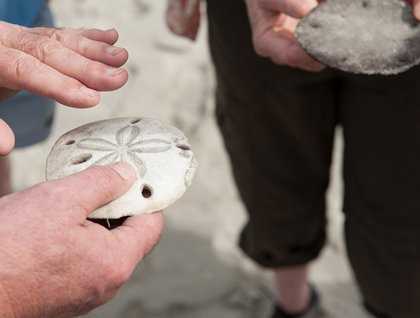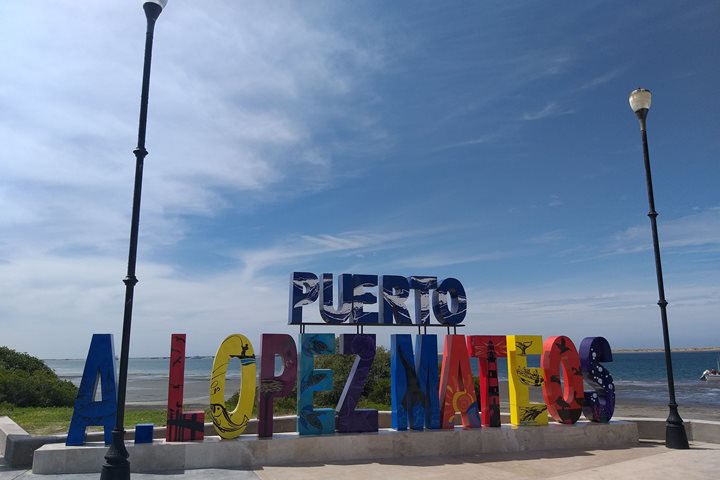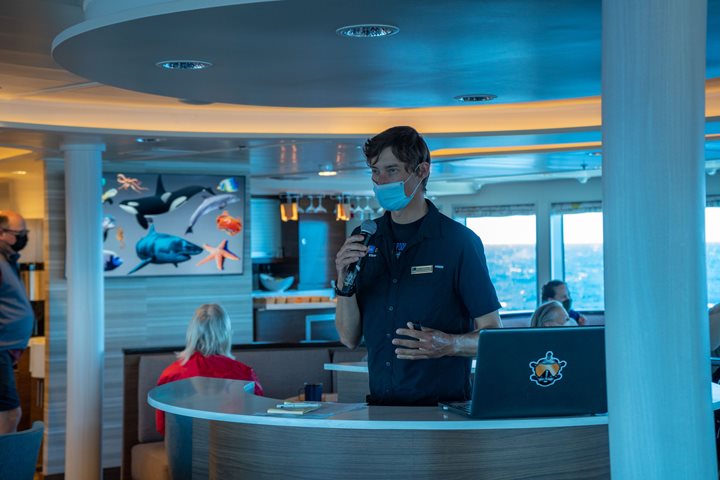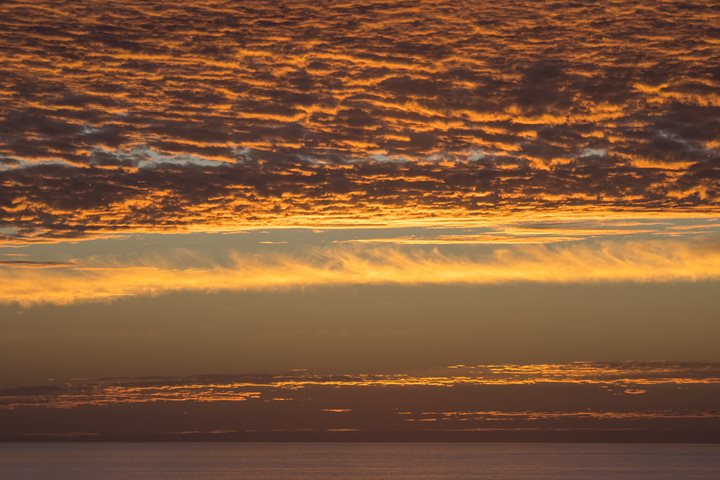Dawn broke over the mangroves of Magdalena Bay illuminating the first morning of our expedition. As frigatebirds soared overhead we loaded into our expedition landing craft and glided onto the waters of the bay towards our destination on shore. A 20-minute walk over the sand dunes of Magdalena Island delivered us to Sand Dollar Beach, a ten-mile-long white sand beach on the Pacific side of the island.
The beach lived up to its namesake. Thousands of sand dollars covered the high tide line of the beach. Sand dollars are echinoderms, invertebrates, related to sea urchins, that bury themselves halfway into the sand bottom just beyond the wave zone and feed on suspended plankton and detritus. When they die their hard endoskeletons wash up on shore to the delight of barefoot beachcombers.
After returning to the National Geographic Sea Lion we raised our anchor and sailed north through Hull Canal. Part of Magdalena Bay, this narrow natural canal threads its way between Magdalena Island and the west coast of the Baja peninsula. The canal is bordered with alternating areas of red mangrove trees and bare sand dunes. We all gathered on the bow and took turns spotting great egrets, snowy egrets, willets, godwits, and waterfowl. However the real excitement started when the first gray whales were spotted from the bow. First one, than a cow-calf pair, and before long dozens of 15-foot high spouts were spotted around us. The air tingled with anticipation as the sun touched the horizon and we dropped our anchor. What will tomorrow bring when we launch our boats into the bay? Will we get good views of the whales? Will they allow us to approach? We turned in early to get a good night’s sleep. Tomorrow promises to be an exciting day.







